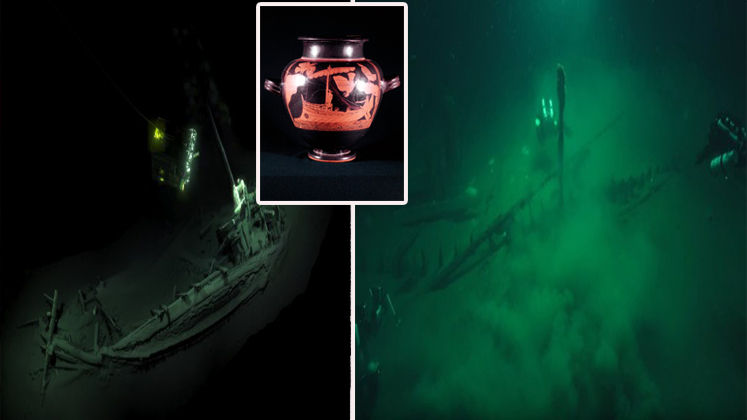Researchers have discovered a skull they believe may belong to a new human species, potentially our closest evolutionary relative, challenging existing knowledge about human origins. The “Dragon Man” skull, hidden in a well for decades, may be closer to us than Neanderthals. Dated to around 146,000 years old, this fossil, with its large brain case and unique mix of features, is prompting scientists to rethink the human family tree. It suggests our understanding of human evolution may need significant revision.
Human evolution spans millions of years, with a key milestone being the shift to bipedalism around 6 million years ago, likely starting with early hominins like Sahelanthropus. Walking upright freed hands for carrying objects, improved predator detection, and aided thermoregulation. Over the next 5 million years, various hominin species emerged, coexisted, shared knowledge, and sometimes interbred. Fossils and artifacts show these groups spread across Africa and later the world, with diverse anatomical and cultural adaptations reflecting their environments.
Modern humans, Homo sapiens, likely originated in Africa, though debate persists about whether they emerged in a single location or across multiple regions. Fossils from sites like Florisbad (South Africa, ~260,000 years old), Omo River (Ethiopia, ~195,000 years old), and Jebel Irhoud (Morocco, ~300,000 years old) show a mix of modern and archaic traits, indicating a complex, non-linear evolution. Around 300,000 years ago, African toolmaking advanced, with refined blades and spear points reflecting improved craftsmanship. A skull from Iwo Eleru (Nigeria, ~13,000 years old) retains archaic features, further highlighting the diversity of early human populations.
The Sima de los Huesos (“Pit of Bones”) in Spain’s Atapuerca Mountains has yielded thousands of fossils from at least 28 individuals, including the earliest known Neanderthal remains. DNA extracted in 2016, the oldest from a human ancestor at the time, suggests a common ancestor for modern humans and Neanderthals lived 500,000–750,000 years ago. Other species, like Denisovans, also contributed to our genetic heritage, though their fossils are scarce. The site reveals a mix of modern and archaic traits, underscoring the non-linear nature of human evolution.
Toolmaking began at least 3.3 million years ago, evolving from simple implements to the Acheulean tradition (~1.75 million years ago) with hand axes and cutting tools. By 400,000 years ago, hominins in regions like modern Germany crafted thrusting spears. Around 300,000 years ago, advanced spearheads with stone or bone tips appeared, as seen in southern Kenya (~298,000–320,000 years old). Later, specialized tools like scrapers and bone spinners emerged, reflecting adaptations to diverse environments. Sophisticated stone blades near Chennai, India (~250,000 years old), suggest either early modern human migrations or independent innovation by other hominins.
Homo sapiens began migrating out of Africa in multiple waves, with evidence of small groups leaving over 100,000 years ago. A jawbone from Israel’s Mount Carmel (~177,000–194,000 years old) and fossils from Kafzeh (~100,000–130,000 years old) indicate early modern humans reached the Middle East, possibly coexisting with archaic hominins. In southern China, fossils and burial sites (~80,000–120,000 years old) show mostly modern features with some archaic traits. A partial skull from Apidima, Greece (~200,000 years old), may represent an early modern human in Europe, though its classification is debated. Genetic studies suggest most non-African populations descend from a major migration ~50,000–60,000 years ago, with interbreeding with Neanderthals and Denisovans.
The Harbin skull from China, dated to ~146,000 years ago, may represent a new species, Homo longi (“Dragon Man”). Its large brain case, prominent brow ridges, and three-rooted tooth distinguish it from modern humans. Some propose it’s closely related to Denisovans, though limited Denisovan fossils make confirmation difficult. Extracting DNA could clarify its place in the human lineage, potentially reshaping our understanding of ancient human interactions in Asia.
Other hominins, like Homo floresiensis (“hobbits”) on Flores Island (~50,000 years ago), coexisted with modern humans but left no clear genetic trace. Neanderthals, widespread across Eurasia until ~40,000 years ago, interbred with modern humans, contributing small amounts of DNA to non-African populations. Denisovans, known from sparse fossils in Siberia and Tibet, also interbred, with their DNA present in some Asian and Oceanian populations at 3–5%. The Dali skull from China, with its mix of archaic and modern traits, may represent another distinct group, possibly Homo daliensis or a regional variant of Homo heidelbergensis.
In Israel’s Levant, the Nesher Ramla site (~420,000–120,000 years old) revealed fossils with a mix of archaic and Neanderthal-like traits, suggesting a unique population that may have interbred with both Neanderthals and early Homo sapiens. Stone tools and animal remains, including evidence of sophisticated fire management, indicate cultural and technological exchanges. The Tabun C1 fossil (“Tabun Lady”) from Tabun Cave, initially thought to be Neanderthal, may belong to the Nesher Ramla group, potentially a bridge between Homo sapiens and Neanderthals. These findings, supported by genomic evidence of interbreeding ~400,000–200,000 years ago, highlight a complex web of genetic and cultural interactions.
Each new discovery, from fossils to ancient DNA, reveals a dynamic, interconnected human evolutionary history, challenging the idea of a simple, linear progression and enriching our understanding of our diverse origins.






















